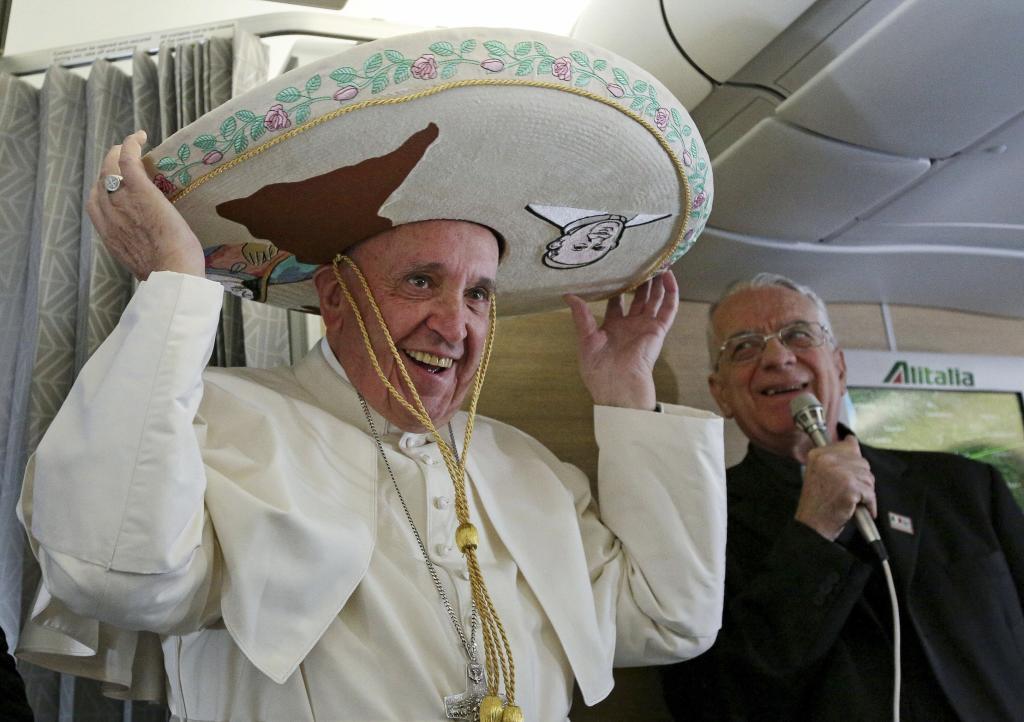John Paul II was rightfully nicknamed the Traveling Pope. During his 26-year pastoral mission, he visited over 120 countries, covering a distance equivalent to three times the Earth-Moon separation. Wojtyla understood like no other the importance of the Catholic Church opening up to the world in an era of rapid changes, mastering the mass media of his time and appearing where crowds awaited him.
His successor, Benedict XVI, in his eight-year pontificate, was more selective in his travels, partly due to his fragile health. Nevertheless, he carried out 24 pastoral trips.
And now Francis, upon assuming the papal throne, resumed the international projection of the papal figure, with a very defining determination of both his personality and his conception of the Church in the 21st century: reaching out to the peripheries. "One must go to the periphery to see the world as it truly is," stated Francis on numerous occasions, often prioritizing traveling to places not entirely receptive to what he represented, rather than engaging in massive gatherings in major nations where Catholics remain the majority.
Thus, Bergoglio made history by stepping foot in places ranging from Democratic Republic of the Congo, South Sudan, or Mongolia, to Bangladesh, Myanmar, East Timor, or Papua New Guinea. "At the periphery of the periphery," as emphasized during his visit to the oceanic archipelago in the southwest Pacific, he did not hesitate to travel to Vanimo, a village with barely 11,000 inhabitants and almost no followers of Jesus, to embrace the community of missionaries who dedicate themselves to commendable assistance work in such places, while also denouncing the alarming deforestation affecting many corners of the planet.
Throughout his nearly 12-year Pontificate, Francis carried out 47 apostolic trips and visited 66 countries. Despite the significance of these numbers, he never visited major nations crucial to the Catholic Church, such as Spain, with a resolute will, as mentioned, to prioritize the peripheries.
"Shipwreck of civilization"
His first official trip from Rome, as the Holy Father, in July 2013, was a clear statement of intent. He traveled to the Italian island of Lampedusa, where he prayed for the many immigrants who perished in a Mediterranean turned into the largest of cemeteries. Since then, the Pope has made combatting the dehumanization of the migration phenomenon one of his main causes, expressing his "pain and shame" on countless occasions and trips regarding what he labeled as a "shipwreck of civilization," urging the entire humanity to treat fairly those fleeing wars, poverty, or situations of despair. Recently, Francis also criticized immigration policies that "cannot be built on the privilege of some at the expense of others," referring to the shift in this matter imposed by Donald Trump's administration.
His first trip outside Italy was to Brazil in 2013. It was interpreted that the Pope, arriving in the Eternal City from Argentina, would prioritize Latin America in his foreign agenda, although ultimately he has only visited the subcontinent seven times in total, not too many. However, he established a lasting imprint of avoiding the ceremonial pomp typical of State visits as much as possible, opting instead for acts of greater popular closeness and simplicity, even when facing hundreds of thousands of faithful.
Like his predecessors, Francis maintained his concern for interreligious dialogue in trips such as the one to Israel - where he reflected at the Western Wall - or to Abu Dhabi, becoming the first Pontiff to set foot on the Arabian Peninsula. His efforts to promote peace in the Middle East have been consistent in his pastoral mission. His historic visit to Iraq in 2021 - becoming the first Bishop of Rome to visit ancient Mesopotamia - not only aimed to show the Church's support for the Christian minority enduring ruthless persecution in the region for decades but also led to a significant moment, his meeting with the prominent Shiite leader Ayatollah Ali Sistani, always with the goal of strengthening interreligious dialogue.
Last year, he embarked on his longest journey to Oceania, the only continent he had not yet visited, highlighting the universality of his message.
There are numerous milestones in the foreign affairs of the Pope with the comfortable black shoes - breaking another ancient tradition - including being the first to participate in a G-7 Summit, where he urged the world's most powerful leaders to ensure that artificial intelligence does not further dehumanize us. However, the response from those managing global geopolitics remains uncertain.
Among these milestones, it is impossible not to recall his 2015 visit to Cuba, where he met with Fidel Castro. That visit was not without controversy, and the Pope was aware of the disappointment felt by many followers due to his perceived limited impact on the regime's openness. Nevertheless, his decision was instrumental in significantly improving the situation of the Catholic Church on the island.
During that trip, he also visited the USA, delivering a speech to Congress that many deemed "political" due to the argumentative confrontation with the positions defended by a soon-to-be President Trump. He also addressed the United Nations General Assembly - the fourth Pontiff to do so - emphasizing the organization as essential for humanity to survive the uncontrolled use of its own potential, in his words. It is not difficult to imagine the direction of another speech by Francis in the same setting today.
